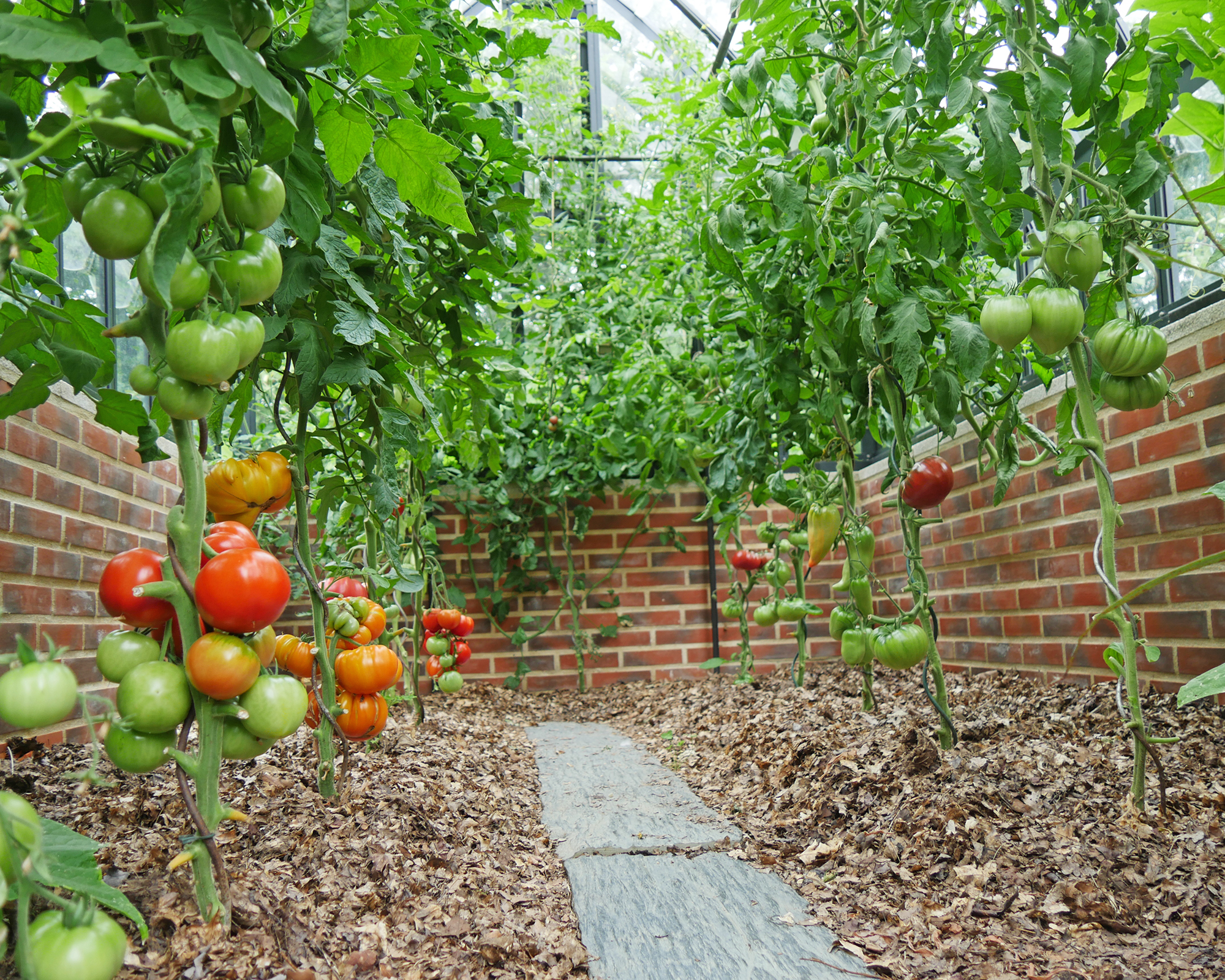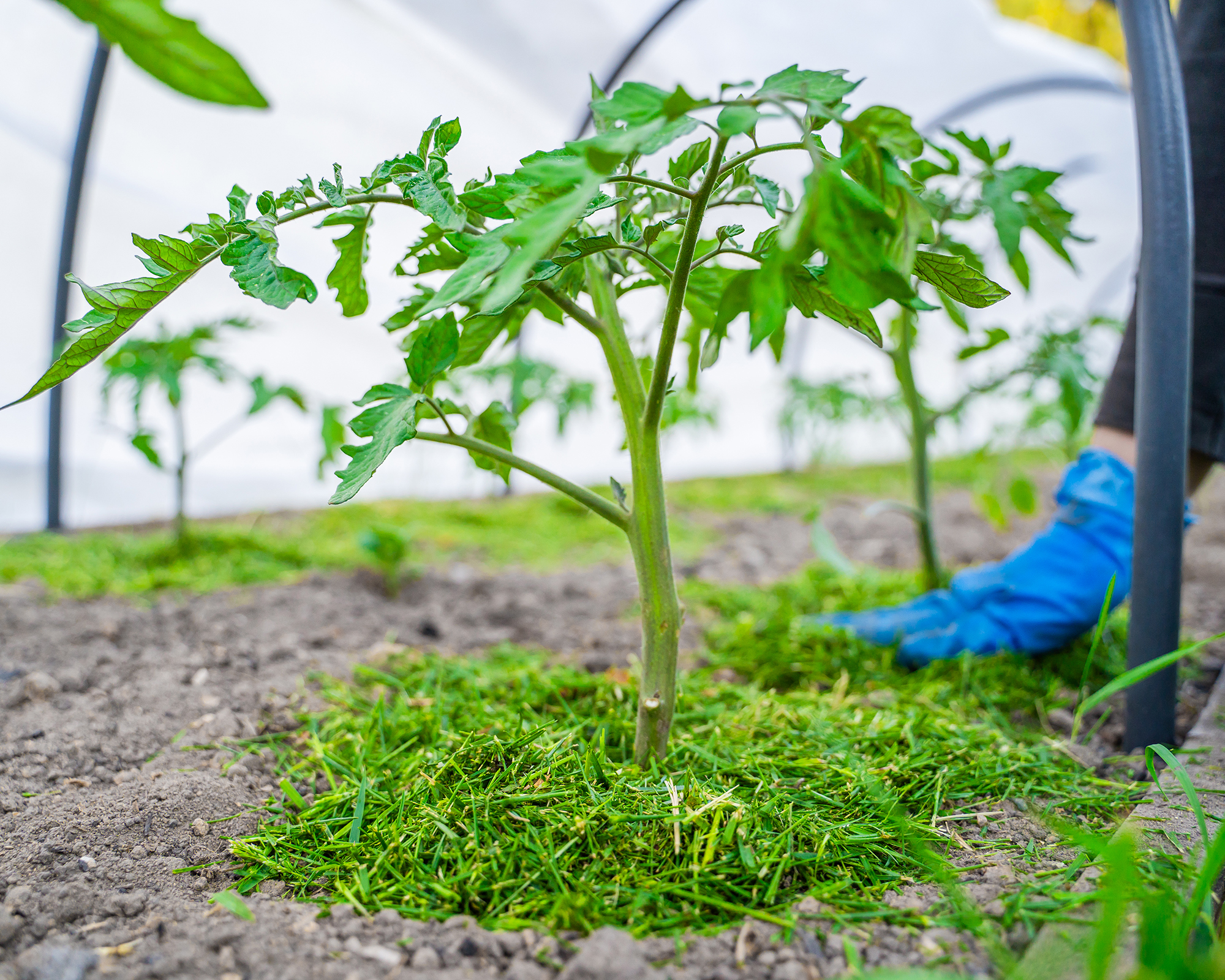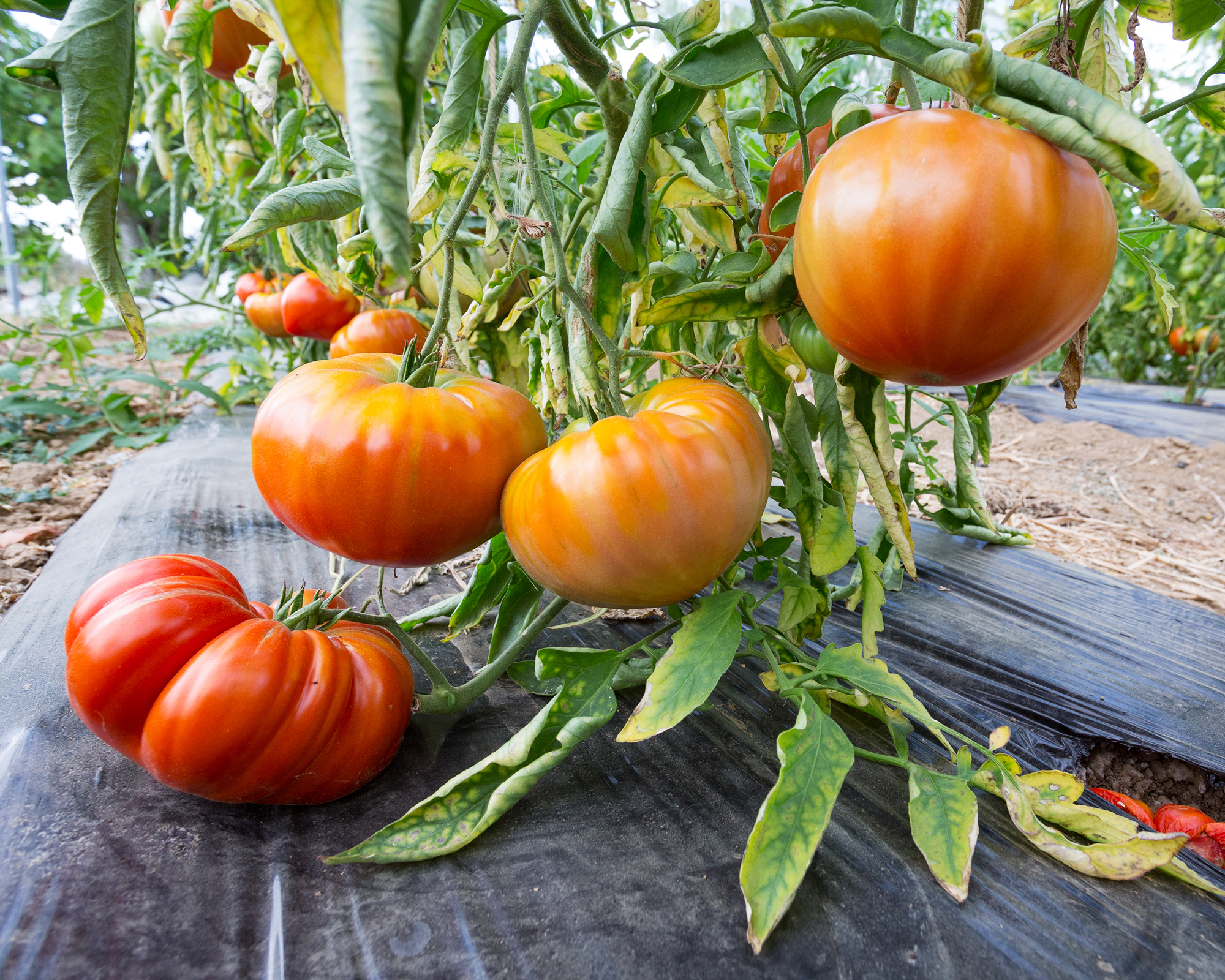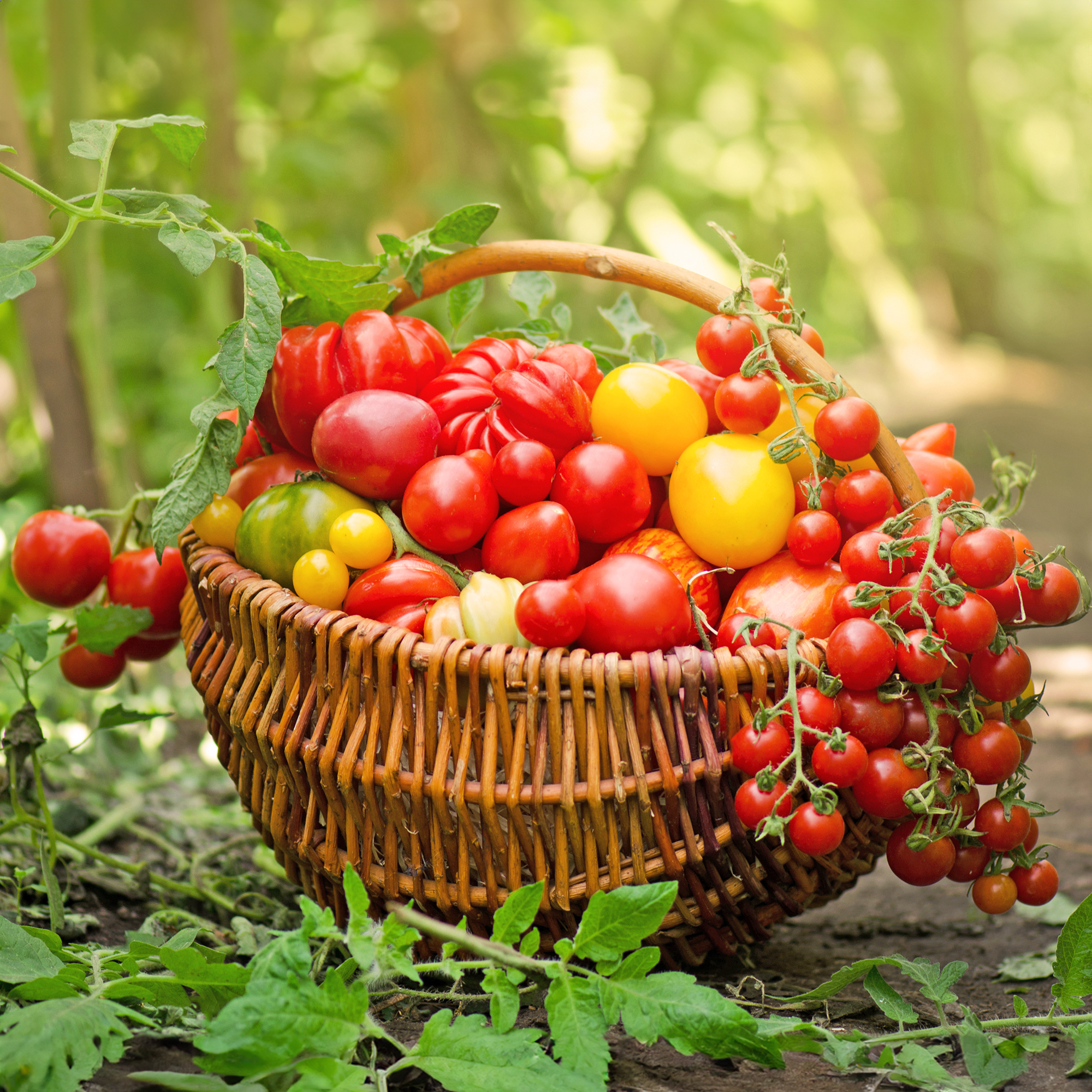Best Mulch For Tomatoes: Expert Guide To Boost Yields, Lock In Moisture & Keep Weeds At Bay
The right mulch can transform your tomato crop – helping plants thrive while saving time, water, and effort in every type of garden.

Susan Patterson

Most gardeners who grow robust tomato plants with abundant, healthy fruit know the importance of mulching. Applying a layer of mulch around plants can keep the soil cool in summer and warmer in spring. It can conserve moisture, block weeds, add nutrients to boost fruiting, and minimize pests and disease. The best mulch for tomatoes will depend on your goal for the material, availability, and whether you are growing organically.
If you want to learn how to grow tomatoes like a pro, then it all starts with good soil. The best soil for tomatoes is well-draining, slightly acidic, and moderately fertile. Mulch is essentially an extra layer applied over the top that protects the soil and helps it do its job. If you use natural, eco-friendly mulch, it can also enhance the soil as the material slowly breaks down, boosting fertility and even altering the soil pH.
Selecting the best mulch for tomato plants has many benefits, but with so many materials to choose from, where do you start?
Should You Always Mulch Tomato Plants?
Some gardeners swear by mulching, while others don’t bother. The type of soil may dictate whether it is necessary – for example, plants in sandy soils will benefit greatly from a layer of mulch to keep moisture in the soil, while clay soils often don't need extra help in that regard. However, mulching has other important benefits to consider:
- It can help prevent soil-borne pathogens from splashing onto the leaves and spreading common tomato diseases.
- Mulching around seedlings is beneficial if the soil temperatures vary at night by keeping the soil warm.
- In summer, mulches keep the soil damp and cool on hot days.
- Organic mulches will deliver a slow release of nutrients as they break down and increase the soil tilth and porosity.
- It can slightly increase the soil's acidity if you mulch with pine needles or oak leaves.
- Mulch can help prevent rotten fruit by keeping it off the soil.
- It can prevent the soil from crusting. When this happens, water has difficulty percolating to the root zone.
- Mulches can also help prevent competitive weeds and save you from the back-breaking task of weeding.
Best Mulch for Tomato Plants
The best mulch for tomatoes depends on many things, including your budget and personal preferences. While type of much you select may also depend upon the stage of growth. The biggest decision to make is whether to opt for organic or inorganic mulch materials.

Organic Mulches
Organic mulches can support plant growth while also enhancing the soil. As they break down, they deliver a slow release of necessary nutrients. This doesn’t mean you won’t have to fertilize tomatoes, but it will gently provide needed fuel for growth. There are many options for organic mulch:
- Straw is very popular, especially in rural areas where it is readily available. Choose a reputable source to ensure the straw wasn’t harvested where a long-acting herbicide was used. The only issue with straw is seed sprouting. To remedy this, make sure you know what you're getting – know your source and exactly what is in the bales, as there are many different types. Golden straw and wheat straw are good choices. Stay away from feed hay, as this is full of weed seeds. Place a 3 to 6 inch (8 to 15cm) layer of straw around your tomatoes, but avoid touching the stems or leaves of plants since this can increase the likelihood of fungal problems.
- Grass clippings are something most homeowners have an abundance of. To use these without growing a crop of grass around your tomato plant, spread them out and let them dry thoroughly before adding a thin layer around the root zone of the tomato, leaving a gap between the clippings and the stems so that water has access to the roots. Avoid using clippings after any grass treatment.
- Shredded leaves are another abundant resource in properties with trees. Allow them to dry and shred them using your mower with a bag attached to collect the pieces. Leaves provide excellent protection from weeds and also increase moisture retention. The downside with leaves is that they can blow away.
- Wood chips should be from untreated wood. Raw, unprocessed wood chips will last much longer than grass clippings or leaf litter. Their slow decomposition means you do not have to replace the mulch during the season.
- Bark is readily available in garden centers. Avoid using the kind that touts its color as long-lasting, as these have been dyed. Choose one of the finer bark blends to allow for better coverage and faster release of nutrients.
- Cocoa hull is a byproduct of processing cocoa. It is a discarded item which, when used as mulch, prevents waste of this organic material. Be cautious using this material if you have dogs because the scent is very attractive to them.
- Compost is an excellent mulch that delivers nutrients much more quickly and in a more balanced manner than some of the other mulch options. You can make your own or purchase compost. Compost may be high in nitrogen, however, so use it sparingly.
- Newspapers today mostly use ink derived from plant sources. Therefore, it is completely organic. Shred the papers or lay them around the root zone to prevent weeds and conserve moisture. Lay newspaper three sheets thick and cover with a light layer of organic mulch to hold the sheets down.

Inorganic Mulches
Another source for mulch comes from certain inorganic materials. These will last much longer than organic mulches as they don’t break down, but they will not deliver nutrients into the soil. They can also prevent soil percolation, as in the case of plastic sheeting, and release microplastics into the soil.
Sign up for the Gardening Know How newsletter today and receive a free copy of our e-book "How to Grow Delicious Tomatoes".
- Black plastic is widely used by commercial tomato growers and by home gardeners on newly planted seedlings. It warms the soil, allowing for slightly earlier planting and thus increased yields. Plastic also keeps weeds down. However, this type of mulch is labor-intensive and costly. Unlike organic mulch, the black plastic must be put down in the spring and taken up in the fall. However, it is often taken up in the summer, with the planting area then top-dressed with organic mulch to protect the root zone and help keep the soil moist once the heat arrives.
- Red plastic is used to retain soil heat and increase tomato yield. Also known as Selective Reflective Mulch, red plastic prevents erosion and retains soil moisture. Although not technically a mulch, red plastic is thought to reflect certain shades of red light. Not all red plastic will give the same results – it must be red plastic that has been proven effective for tomato growing. Some studies indicate that red plastic offers additional benefits of repelling nematodes that like to munch on the root system of tomatoes. Tiny holes in the plastic allow air, nutrients, and water to pass through. Although the red plastic costs more than some other types, you can reuse it for several years.
- In addition to plastic sheeting, pea gravel, lava rock, landscape fabric, and recycled rubber tire mulch are all options.

How to Mulch Tomato Plants Properly
Mulches should be applied after planting. Most organic mulches should be applied at a depth of 2 to 3 inches (5 to 7.5cm). Spread it evenly around the plant, leaving an inch (2.5cm) around the main stem for easy water penetration and to prevent trapping moisture on the plant material, which can lead to fungal diseases developing.
Organic mulches will need to be refreshed as they break down.
Mulching for Containers
If growing tomatoes in containers, the best mulch is an organic and lightweight product. Pebbles or plastic could be used, but due to the confined site, providing the plant with air flow, percolation, and extra nutrients is crucial. Use fine bark mulch or equivalent organic matter.

Common Mulching Mistakes to Avoid
- Don't mulch too late or you'll miss many of the benefits. Mulch as soon as the soil has warmed and your plant is installed.
- Avoid heavy layers of mulch around tender seedlings. Wait to add more until the stem is sturdy.
- Do not let the mulch pile up around the stems, or it could trap moisture and encourage disease.
- Interestingly, fresh wood chips can temporarily rob the surface of the soil of nitrogen. This is because the decomposition process requires nitrogen. Use fresh wood chips only once the plant has done most of its vegetative growth.

Bonnie Grant is a professional landscaper with a Certification in Urban Gardening. She has been gardening and writing for 15 years. A former professional chef, she has a passion for edible landscaping.
